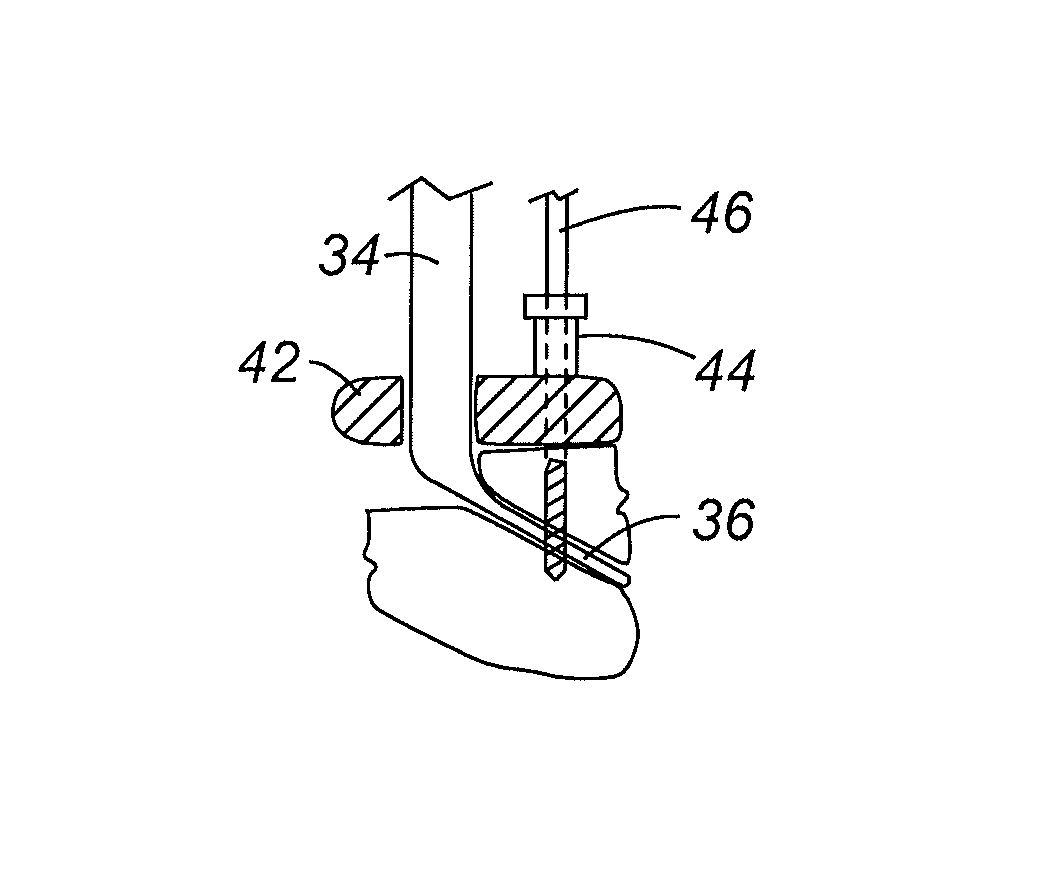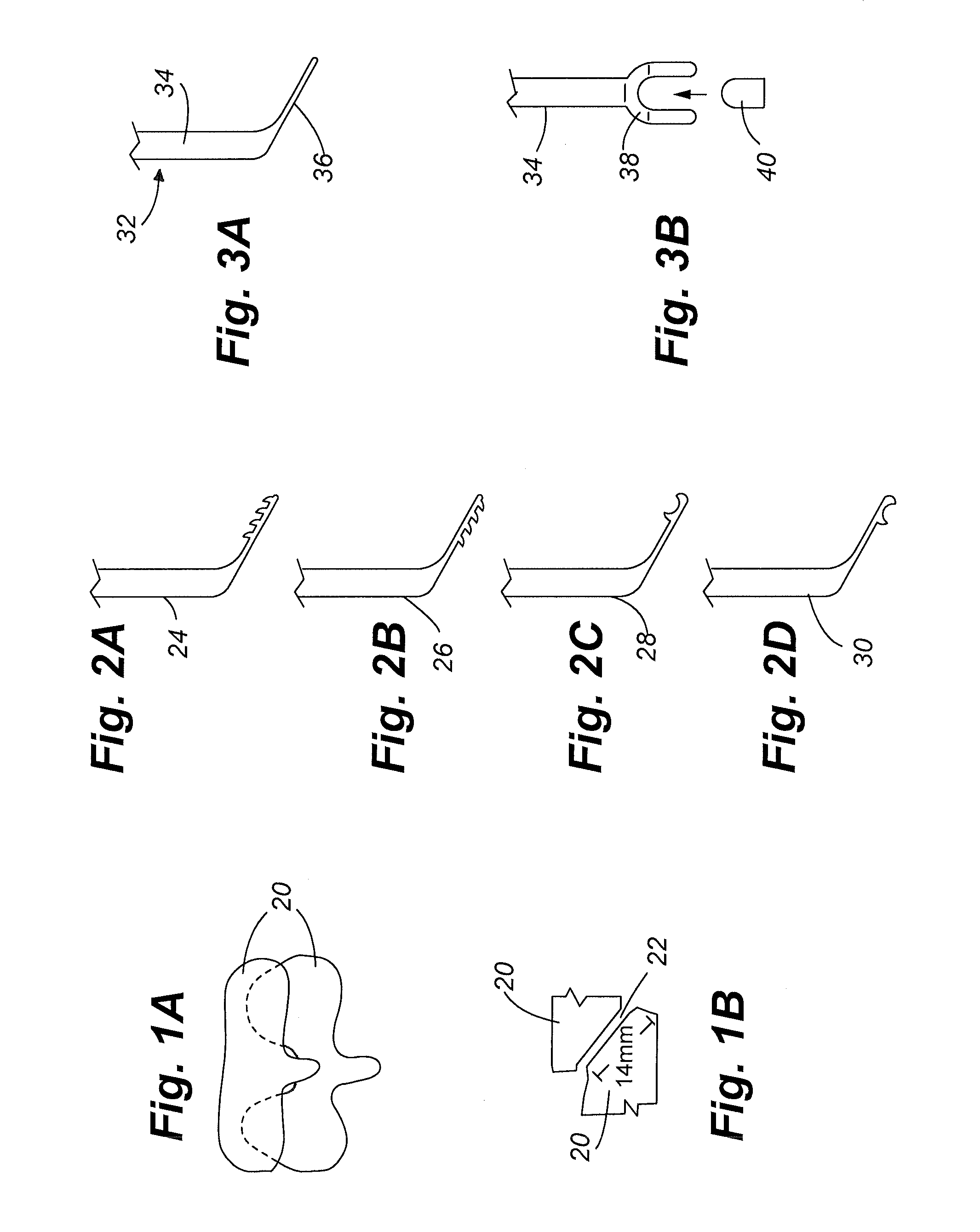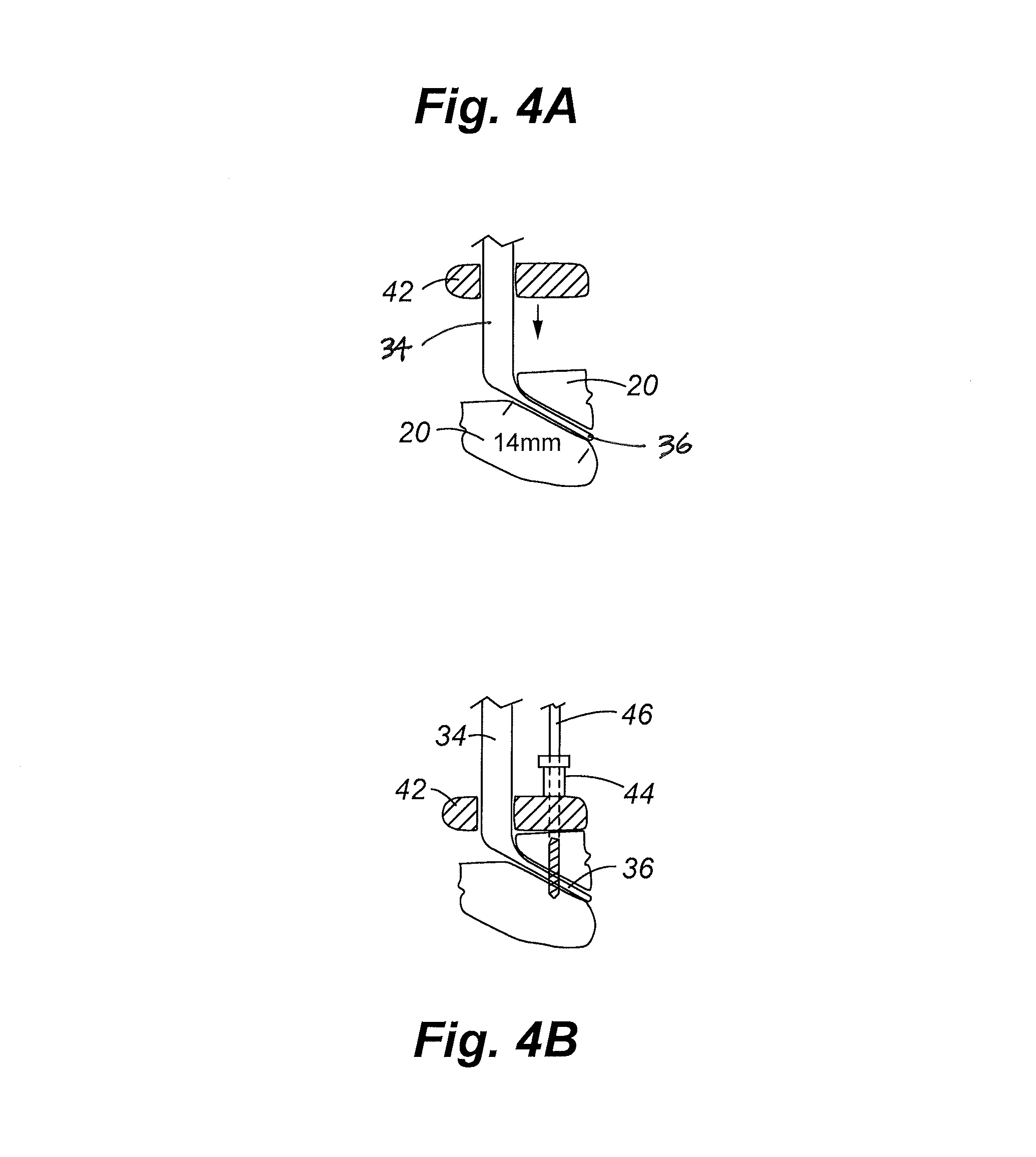Apparatus and method of spinal implant and fusion
a spinal implant and apparatus technology, applied in the field of orthopedic surgery, can solve the problems of vascular injury, esophagus and spinal cord injury, and injury to the superior laryngeal nerve leading to hoarseness, and achieve the effects of avoiding undesired contact or interference, reducing circumference, and minimizing medial-lateral dissection
- Summary
- Abstract
- Description
- Claims
- Application Information
AI Technical Summary
Benefits of technology
Problems solved by technology
Method used
Image
Examples
Embodiment Construction
[0074]According to various embodiments described herein, the present disclosure relates to an apparatus with a handle and a forked head on the distal end of the handle, which may be used to grasp bioactive or other implant material and introduce the material to an implant site. The shaft of the apparatus is shaped so as to allow the affixation of a drill guide and drill while simultaneously holding the implant material in the implant site. Various other tools include dilators and cannula that are designed to improve accessibility and efficiency in implanting the material, as well as reduce trauma to the patient, including limiting the risk of ischemic injury due to the displacement of muscle or other tissue when accessing the implant site. In addition to these tools, fastening devices such as screws, hooks, clamps, rings, clasps, bolts and / or staples such as those described herein may also be used to secure the bioactive or other implant material to the implant site. One aspect of t...
PUM
 Login to View More
Login to View More Abstract
Description
Claims
Application Information
 Login to View More
Login to View More - R&D
- Intellectual Property
- Life Sciences
- Materials
- Tech Scout
- Unparalleled Data Quality
- Higher Quality Content
- 60% Fewer Hallucinations
Browse by: Latest US Patents, China's latest patents, Technical Efficacy Thesaurus, Application Domain, Technology Topic, Popular Technical Reports.
© 2025 PatSnap. All rights reserved.Legal|Privacy policy|Modern Slavery Act Transparency Statement|Sitemap|About US| Contact US: help@patsnap.com



